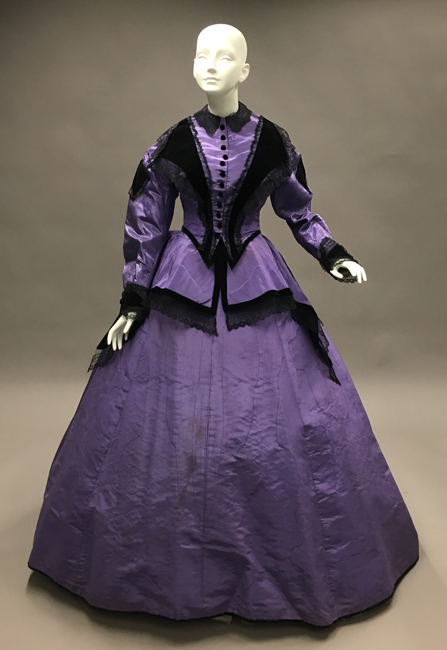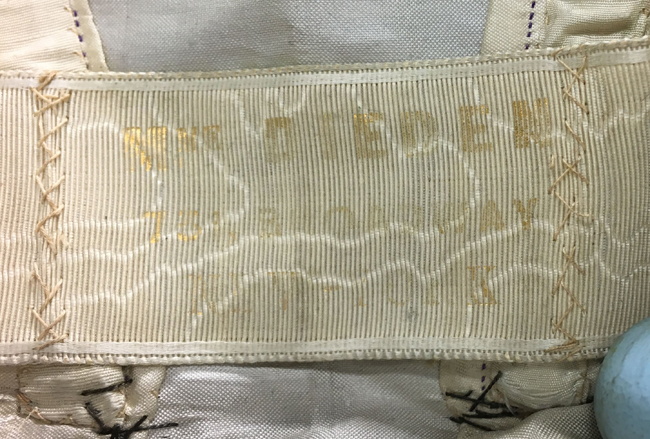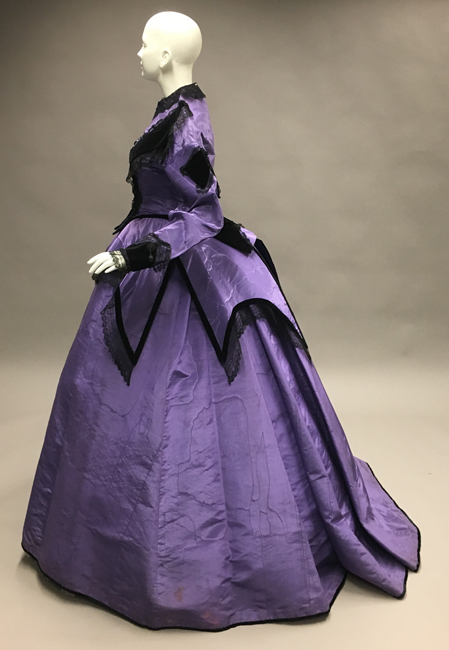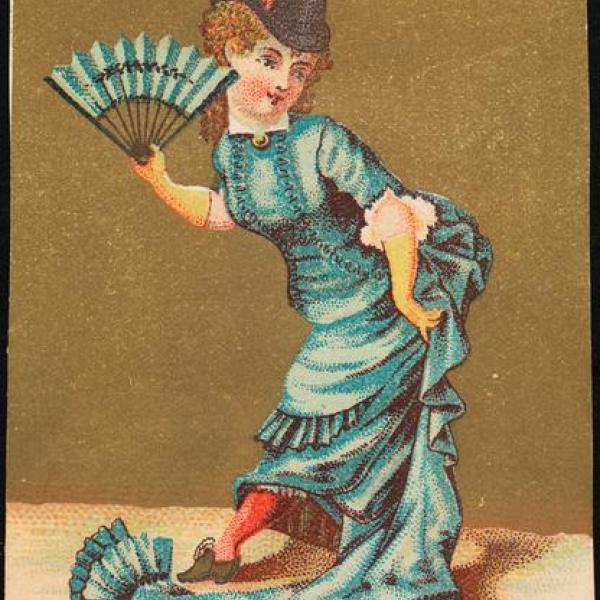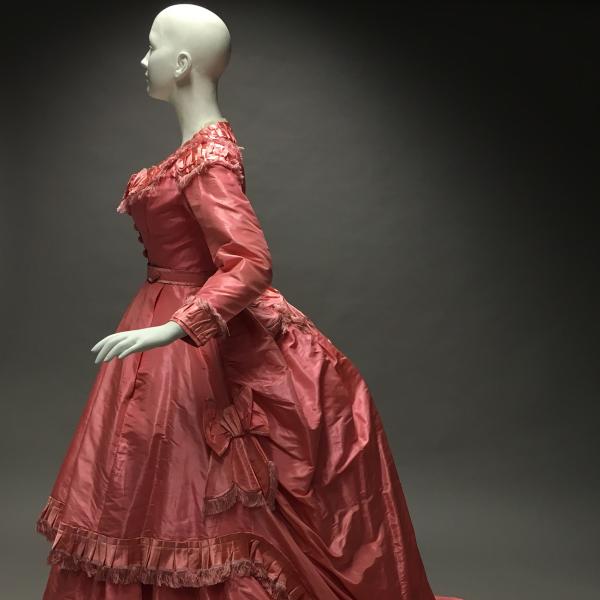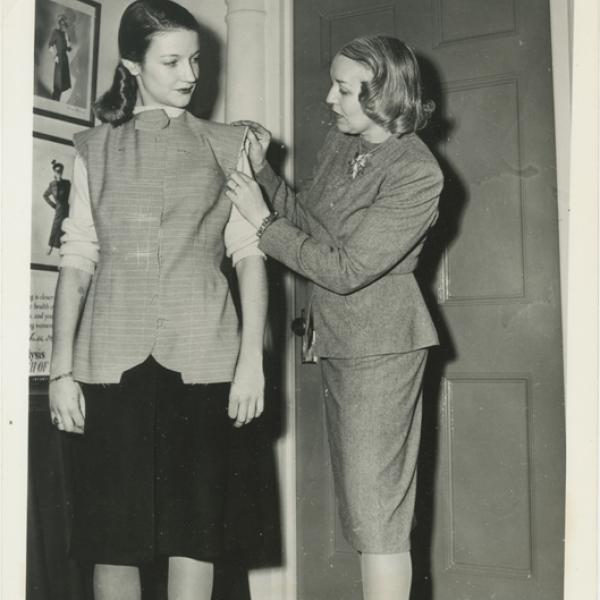One Dress, Two Women's History
Wednesday, March 13, 2019 by
Costumes can often provide tangential histories for women in 19th-century New York – not just the wearers, but the makers behind them. This ca. 1866 dress of purple silk moiré (41.35.105A-C) with black velvet and black lace trim was donated to the Museum in 1941 by the Pierrepont family of Brooklyn and was worn by Anna Maria Jay (1819–1902), wife of Henry Evelyn Pierrepont (1808-1888) and granddaughter of John Jay, the first chief justice of the U.S. Supreme Court. At the time this dress was made, she and her husband were living in Brooklyn at 1 Pierrepont Place.
The color palette of this dress, black and purple, suggests that it might have been worn as a half-mourning garment. This would signify that either the wearer was mourning a family member who was not a close relative, or to signify an end to the mourning period for an immediate family member when all-black garments could be exchanged for shades of grey and purple. As part of the research surrounding this garment, Museum staff has not yet identified any family that might have died during this time.
The garment does identify the dressmaker with a woven petersham (e.g., a waistband attached to bodice’s interior) stamped in gold. While some of the lettering is worn and illegible, “Mme Dieden/ 73[illegible] B’way / New York” is still decipherable.
Trow’s New York City Directory lists “Dieden, John / lace / h 405 B’Way / 731 B’way” and "Dieden, Sophia / dressmaker / 731 B’way” (page 251, 1865–66 edition). Located near the northwest corner of Broadway and Waverly Place, the address was about a block from the A. T. Stewart department store and sat near the foot of what would become the base for the Ladies Mile shopping district.
Using city directories, censuses, and other primary sources, Museum staff has begun to sketch out the more than 15 years that Sophie was in business. The 1855 New York State Census for the 15th Ward describes Sophie Dieden, age 34, as a dressmaker and her Belgian-born husband, John, age 36, as a dealer in lace.
Using Trow’s, we find that John and Sophie apparently worked side by side throughout most of the 1860s. In May 1866 they have moved north to 25 Union Square, but John’s lace business is dropped from Trow’s by 1867. Sophie is the sole business entry for the Diedens, and she is also cited in the 1867 Guide to New York:
“
Ladies wishing the latest styles of Paris Modes can find them at Mdme. Dieden’s No. 25 Union Square.
”In April 1870 Sophie’s husband makes out his Last Will and Testament and within a year he is dead, leaving her as his executrix and sole heir. In February 1872 Sophie posts an ad in the New York Times offering “Stock and Good-Will for Sale.” She is retiring from the business.
This purple silk day dress may be the only existing example of Madame Dieden’s work—to date, no other garments have been located. Although the skirt shows signs of being altered and updated, the “Broadway” label places its probable creation to before 1866—making it possibly one of the earliest American maker’s labels found in a woman’s 19th-century garment.
We can appreciate this garment for appearance and its place in the American fashion history. Knowing the wearer, we can explore what its distinctive color palette could mean. Equally important, we can look at what it reveals about one woman and her working life in New York City.
